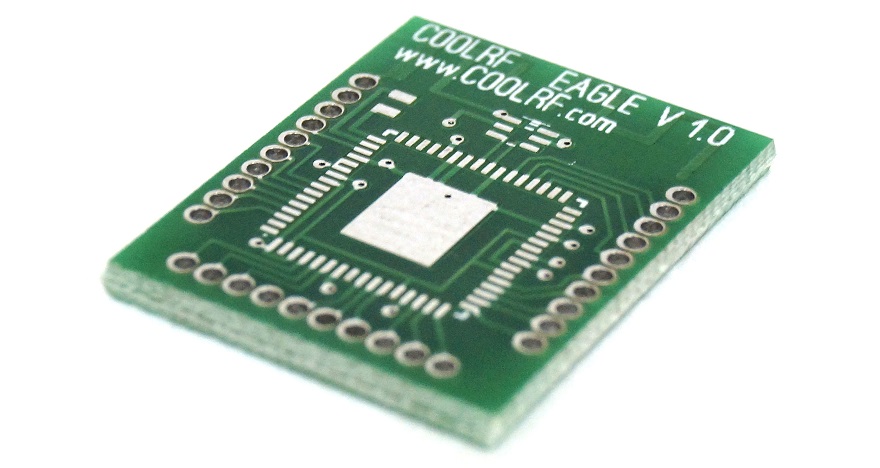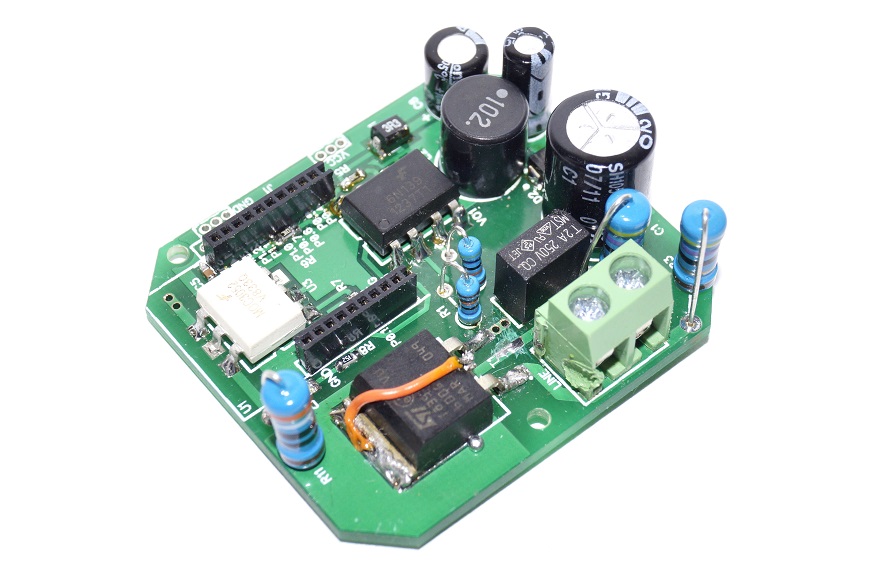CoolRF: Project News Digest # 1

The January holidays are coming to an end. During these days we have accumulated a certain amount of news. Each of them is interesting, but so small that it does not pull on a separate post. Under the cut of a photo of new printed circuit boards, a photo of the first assembled dimmer (not without a fly in the ointment), the announcement of a new participant in our project.
A brief introduction to the course for those who first saw our project
We are developing a complete system of smart home. The “first sign” of our system is a DIY-dimmer. Here are its main characteristics:
If you want to join in the discussion of the features of the system, please read all our previous articles and comments to them. Most likely the questions after such an introduction will be much less.
- 2.4 GHz radio channel operation (own protocol, without licensing restrictions, or ZigBee implementation based on Atmtel BitCloud)
- Encrypted connection
- Installation without changing the standard wiring of an ordinary apartment
- Low power consumption
- The usual look of switches
- The possibility of independent expansion of both hardware and software functionality
- Open source code of both software and hardware
If you want to join in the discussion of the features of the system, please read all our previous articles and comments to them. Most likely the questions after such an introduction will be much less.
Want to keep abreast of all project events? It is not difficult at all!
You just need to subscribe to the update of our company in Habré and in the VKontakte group .
')
With VKontakte questions usually does not arise. To subscribe to Habr's updates, you need to go to the company’s page and click the “Subscribe” button in the block on the right.
')
With VKontakte questions usually does not arise. To subscribe to Habr's updates, you need to go to the company’s page and click the “Subscribe” button in the block on the right.
COOLRF EGLE / EGLE USB / EGLE PROG
We decided to change the naming scheme of the modules. Do not use numbers, use letters. To better remember. The ATMEGA-based radio module is called EGLE (from eagle). Dimmer will be called DMMR. Of course, in a hurry on the board got another, detailed, designation. Nothing, the dimmer boards in the first version also turned out to be nameless on silk. Correct in the next versions.

Now we have three types of boards: a radio module based on atmega, a usb adapter to it, an adapter for the programmer. The important point is that additional modules are compatible only with this radio module. They will not work with the module based on NRF24LE1. We have tried to reflect this fact in the names of the boards. NRF has already developed its own USB-board, as we will deal with the software, we will definitely tell you.
The USB adapter will work through a special microcontroller firmware based on the VUSB library. Adapter for the programmer will allow you to connect standard programmers to the socket in the MK. In the future, the radio modules will be supplied by us with already-stitched bootloaders that allow firmware through the air.
Now we have on hand a little less than 20 ATmega128RFA1 chips. All radio modules based on them are already distributed among the pre-order participants. Prices for modules and pre-order form are here . If you are interested in starting to use our radio modules in the near future, participate in the pre-order. While we do not have the opportunity to purchase atmegi with a large margin, I want to focus on real demand.
Order PCB Radio Modules
If you want to buy all the components yourself and assemble the radio modules, you can purchase ready-made printed circuit boards from us. We printed them with a good margin. The cost of one board when buying from 1 piece = 40 rubles, from 10 pieces = 30 rubles, from 25 pieces = 20 rubles. For example, a set of 1 usb, 1 prog and 8 radio module boards will cost 300 rubles. You can order while through the mail preorder (dog) coolrf.com. We discuss the details with the first buyers individually, we will publish the device schemes later.
COOLRF DMMR
There are already collected copies. A spoon of tar - we could not make the triac work, being soldered only for the contact pad. It works, only with such a “crutch” - wiring connecting the platform and the average output. If someone can explain the reasons - please write in the comments where we made a mistake.

As a result, the design turned out a little higher than it contains our first printed case. Add a couple of millimeters of height to the body in the second version. After the hull, according to the plan, testing work in real walls. Most likely this will happen in a week and a half.
Hello, JetStyle!
At the end of December, the well-known Ekaterinburg company JetStyle joined our project. Such famous companies as Microsoft, SAP, Yandex and many others successfully use the services of JetStyle. Now JetStyle will be engaged in the visual component of our project - website design, illustrations for articles on Habré, UI-design of the interface for managing our smart home, etc. With the help of a new member, we will look beautiful, comfortable and interesting.
Source: https://habr.com/ru/post/208396/
All Articles